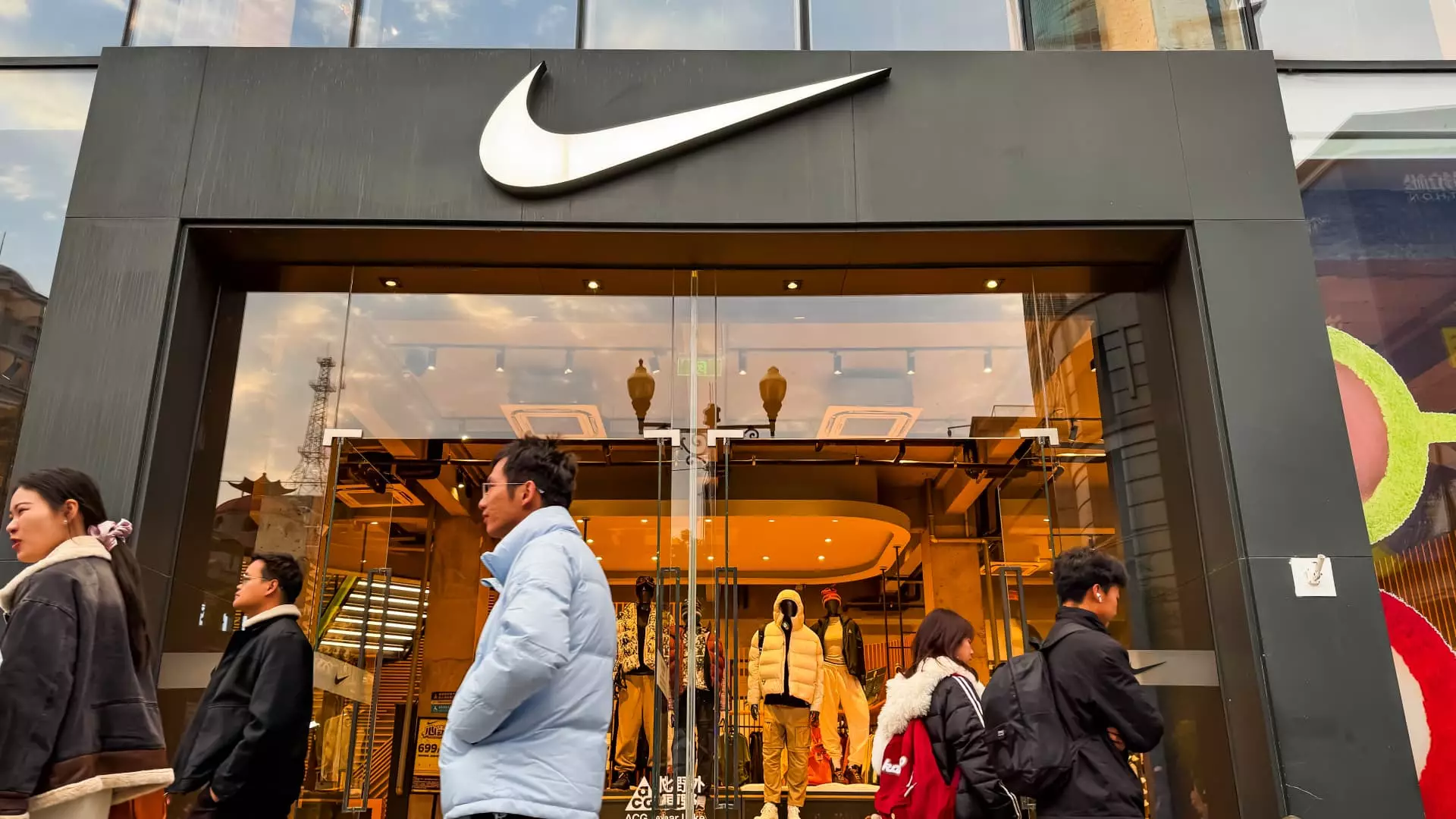Nike, renowned for its iconic “swoosh,” is currently navigating turbulent waters that threaten to erode its dominance in the athletic apparel market. Recent revelations from the company depict a stark picture: a potential double-digit decline in sales this quarter is not just a blip on a chart; it’s a signal that bold corrective measures may be faltering under the weight of external pressures and internal missteps. This transformation, which many believed would triumph swiftly, has turned into a protracted challenge beset with complications from tariffs, diminished consumer trust, and an uncertain geopolitical landscape.
The Sinking Sales Strategy
Nike’s finance chief, Matt Friend, disclosed a grim forecast during the latest conference call, projecting a fall in sales volatility that could reach the “mid-teens range”—an alarming indicator that suggests more than a mere transient slump. Surpassing the consensus estimate of an 11.4% downturn, the company’s gross margins are anticipated to fall by an additional 4% to 5%. This downward trend signals not only a push to purge outdated inventory but also a race against time to recalibrate what consumers genuinely want. When engaging in strategic repositioning, one would presume ample foresight; unfortunately, Nike’s foresight appears blunted by the very realities it aims to maneuver.
The agility required in today’s fast-paced market isn’t merely about introspection and reevaluation but also an adept response to fluctuating external conditions. The imposition of tariffs, for example, has significantly altered Nike’s cost structure, with nearly a quarter of its manufacturing ties in China. Coupled with worsening consumer sentiment, it becomes increasingly challenging for a company to justify higher prices while simultaneously attracting price-conscious consumers.
Is Innovation Investing Enough?
Amid growing pressures, the brand’s decision to ramp up inventory clearance efforts potentially detracts from its core value proposition: innovation. While Hill’s appointment as CEO signals a fresh chapter, the apprehensive steps taken thus far led to a challenging quarter characterized by stagnant growth and profits that have plummeted by 32% year-over-year. The question arises: can innovation alone drive sales? Can it truly reclaim market share lost to nimble and appealing competitors?
Hill has emphasized returning to innovation; however, as consumer patterns evolve, it’s the tactical nature of the new product releases that will dictate success or failure. Earlier product launches may have fostered excitement, yet recent developments—particularly in the realm of apparel aimed at female audiences—must yield tangible results. The partnership with Kim Kardashian’s Skims is ambitious yet fraught with risk. Is Nike effectively questioning its own brand identity by aligning too closely with celebrity influences?
Nike’s Perilous Path to Profitable Recovery
Despite strong earnings in its third quarter, where Nike eclipsed Wall Street expectations, the bounce-back appears more illusory than substantial. Retail giants, including Nike, have seen dips in overall demand for discretionary goods, exacerbating their plights. This economic climate necessitates a clear-eyed recognition of spending behavior shifts—consumers cutting back signifies an urgent need to pivot towards essentials over luxury items like sneakers, a trend we’d be foolish to ignore.
Moreover, as Nike grapples with a considerable downturn in sales across China—a key market for the brand—questions arise over the viability of its long-standing market shares. Tariffs and sluggish spending patterns contribute to a precarious future that could jeopardize ongoing efforts to rejuvenate the brand. The anticipated re-engagement with wholesale partners and the rekindling of athlete loyalty should not merely remain aspirational goals but must evolve into actionable strategies.
Consumer Sentiments vs. Corporate Aspirations
Nike’s predicament serves as a microcosm of a broader economic concern. The erosion of consumer confidence, evident in the recent downturn in retail, may be even more alarming than anticipated. As consumers exercise caution in their financial choices, the discretionary status of sporting goods can no longer be presumed secure. Higher product costs and aggressive discounting strategies blur the line between maintaining profit margins and maintaining brand prestige. Herein lies a paradox for Nike: how does it entice spending while conveying value? It’s a challenging balancing act that requires meticulous recalibrating.
Despite the uncertainty hanging over Nike’s current trajectory, there remains a collective hope among investors and analysts. An underlying belief exists that the company will ultimately redefine its brand in a way that captures the shifting demographics and rising trends in the athletic space. However, every passing quarter without significant improvement places more pressure on Nike to deliver results, leaving a hefty weight on Hill’s shoulders as he guides the ship through this tumultuous journey.

